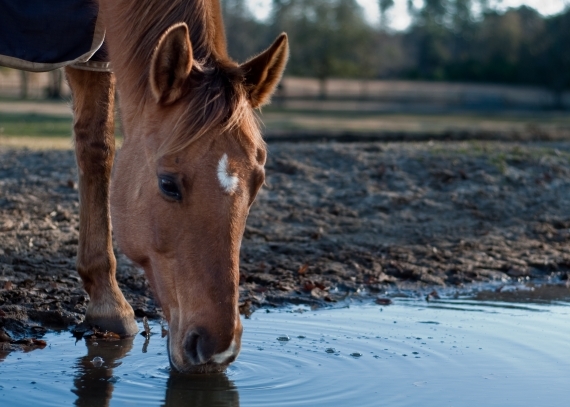Potomac Horse Fever
What is Potomac Horse Fever (PHF)?
Potomac Horse Fever (PHF) is a rickettsial disease of the horse first recognized in 1979 along the Potomac River in Maryland. The causative agent is Neorickettsia risticii which infects the enterocytes and colonocytes of the small and large intestines of the horse causing acute enterocolitis or inflammation of the small intestines and colon. Freshwater insects such as mayflies, damselflies, dragonflies, and snails carry the bacterium N risticii. If a horse consumes hay, grain, pasture, or water contaminated with these dead insects, the horse will contract the disease.
There are geographic and seasonality components to this disease. Most cases are identified late spring through early fall with July, August and September being the most common months. Geographically, certain areas of the country are at a greater risk of PHF including Michigan. Additionally, it is often reported that there is a water source near horses that test positive for PHF.

Common Signs and Symptoms
- Mild depression and anorexia
- Signs of mild colic
- Fever of 102 degrees Fahrenheit or greater
- Dehydration
- Diarrhea
- Laminitis
Diagnosis
Diagnosis is often made based on clinical signs, seasonality, and geographic location. Bloodwork is indicated to determine the white blood cell count, hydration status, and organ function. Definitive diagnosis is based on isolation of N risticii from blood and/or feces of the infected horse by PCR or cell culture.
Treatment
The antibiotic of choice is oxytetracycline (6.6 mg/kg, IV, 3-5 days). Horses often show improvement in clinical signs within 12 hours of the onset of the antibiotic. If the horse is febrile, NSAIDs such as banamine will help control the fever and reduce the risk of endotoxemia. In more severe cases, hospitalization with intravenous fluids and other supportive care may be warranted. With appropriate, timely treatment, the recovery rate is greater than 70%.
Farm Management
Potomac Horse Fever is not transmissible from horse to horse. However, if one horse is diagnosed with PHF on the property, the other horses are at a greater risk for developing the disease as it is in their environment. Prevention of this disease involves limiting the ingestion of insects within the horse’s environment. Turning off barn lights at night will help limit the amount of insects within the environment. Limiting the amount of standing water can also reduce the amount of insects. Also, keep feed covered to limit the amount of dead insects that can contaminate hay and grain
Vaccination
There are several killed vaccines available against PHF. The efficacy of this vaccine is questionable for a number of reasons. There are over 50 different strains of N risticii isolated from the environment today. The vaccine available is only protective against one of these strains. Secondly, the amount of antibody protection within the gastrointestinal tract where the horse contracts the disease is questionable. Research suggests that the vaccine does not increase the odds of survival but did reduce the severity of the disease. It is important to vaccinate your horse for PHF during June to maximize immunity before the peak PHF season.


Mailing Address 7319 Tittabawassee Rd. Saginaw, MI 48603 MAP
Phone (989) 790-7339 Fax (989) 790-7399
Emergency Line (855) 373-7365 ext 0
Hours: Monday-Friday 8 a.m. - 5 p.m.

